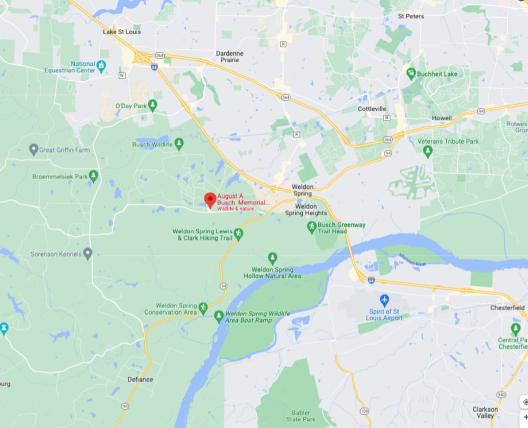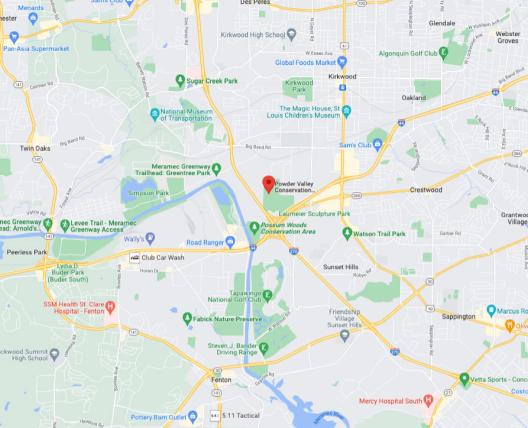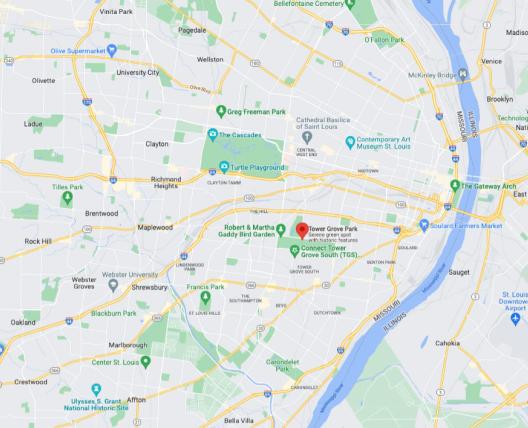Field Trip Guide for Schools and Organized Groups
What to Expect
General Information
- All of our programs are free.
- Groups are responsible for providing their own transportation.
- All program content supports Disciplinary Core Ideas (DCI); see each program description for details.
- Customized programs may be available upon request.
Planning Your Visit
Field trips generally last from 1 1/2 to 3 1/2 hours. Below are the ideal times we recommend, depending on your group size and your availability.
| Number of students | 10 to 25 | 26 to 50 | 51 to 75 | 76 to 100 |
| Minimum time for program | Grades Pre-K–2, 1 1/2 hours Grades 3 and up, 2 hours | Grades Pre-K–2, 1 1/2 hours Grades 3 and up, 2 hours | Grades Pre-K–2, 11/2 hours Grades 3 and up, 2 hours | Grades Pre-K–2, 1 1/2 hours Grades 3 and up, 2 hours |
| May include a teacher-led rotation | N/A | Up to 1 | Up to 2 | Up to 3 |
Students should wear comfortable clothing and closed-toe shoes. They may also need:
- Waterproof shoes or a change of socks and shoes for aquatic programs
- Insect repellent
- Sunscreen
- Water bottle
- Lunch
Weather
Most programs include spending at least one hour outside. Please dress for the weather! Programs will be rescheduled only if conditions are hazardous (e.g., heavy rain, lightning, heat advisory).
Snacks/Lunch
Program times do not include time for lunch. You are welcome to bring a snack or lunch to enjoy after your field trip. If you want to include time for lunch, add an extra 30 minutes to your requested time.
Ticks
Apply 20- to 50-percent DEET insect repellents, if needed. Please have students check themselves for ticks after the program and ask parents to thoroughly check their children when they get home.
Managing Your Visit
Supervision is the responsibility of the teacher and parent chaperones. One chaperone is recommended for every 10 students.
Students
- Remember to be good listeners.
- Have fun! Be involved in discussions and enthusiastic about nature activities.
- Be respectful of peers, adults, and nature.
- Leave rocks, leaves, flowers, etc., where you found them.
- Pick up your trash. Trash cans and recycling are available.
Chaperones
- Be good role models.
- Have fun! If you’re having fun and showing interest in the activities, the students will be more receptive to learning the material.
Lunches
- Please have lunches collectively gathered in a basket or box for each class.
- Each location varies with accommodations for lunch. Options may include a staging area (with benches), arbor area, and front lawn to groups on a first-come, first-served basis.
Field Trips vs. Field Experiences
All MDC programs incorporate hands-on and inquiry-based learning opportunities in nature.
Our naturalist-led field trips, also referred to as school programs, will enhance your science curriculum while also promoting other interdisciplinary subjects.
Field experiences emphasize student-centered, collaborative investigations of natural phenomena and are led by certified classroom DNS teachers to better facilitate classroom connections to concepts. Field experiences are eligible for transportation funding the Missouri Department of Conservation provides through the Discover Nature Schools (DNS) program.
Scheduling a Program
To Schedule
Request a St. Louis School Program
- Programs start no earlier than 9:30 a.m.
- Only one field trip is available per class per school year.
- Programs are available Tuesday through Friday, except holidays.
- Programs are available at all locations, unless noted.
- All programs will be entered into a lottery system for each site.
- A representative from MDC will follow up with you about your request.
Fall Programs
- Available Sept. 25 through Dec. 22.
- Requests are accepted through Sept. 1. All applications received after the deadlines will be considered as space allows.
Spring Programs
- Available Feb. 26 through May 24.
- Requests are accepted through Jan. 15. All applications received after the deadlines will be considered as space allows.
Contact
If you have questions regarding the application or programs, please contact one of our offices.
- Busch Memorial Conservation Area, 636-441-4554
- Powder Valley Nature Center, 314-301-1500
- Rockwoods Reservation, 636-458-2236
- Tower Grove Park, 314-301-1504
In-Person Fall and Spring Programs
Grades Pre-K–2
Wildlife Spotlight
All animals have unique traits that help them live in their habitats. Students will experience these special characteristics through hands-on discovery and outdoor exploration. Choose one from reptiles, birds, mammals, or insects.
Disciplinary Core Ideas: LS1.A: Structure and Function: External parts; LS1.B: Growth and Development
Growing Up Wild
All living things, big and small, have a life cycle. Discover nature as it grows through an exploration of plants and animals.
Disciplinary Core Ideas: LS1.B: Growth and Development; ESS2.D: Weather and Climate
Marvelous Metamorphosis
Metamorphosis is an impressive natural process to see and study. Learn about the unique life cycles of some of our marvelous Missouri critters.
Disciplinary Core Ideas: LS1.B: Growth and Development
Seeds on the Move
Flowers can’t walk, swim, or fly, so how do they spread to different places? Learn about pollination, seed dispersal, parts of flowers, and types of seeds through games and hands-on exploration. Outside, students will see what is happening in the garden and search for some pollinators in action.
Disciplinary Core Ideas: LS2.A: Interdependent Relationships in Ecosystems; 0LS1.A: Structure and Function
Critter Comparisons
Furry, feathered, scaly, or smooth? All animals have special characteristics that help them to thrive in their habitats. Learn all about the role these characteristics play in the survival of mammals, reptiles, amphibians, and birds.
Disciplinary Core Ideas: LS1.A: Structure and Function; LS1.D: Information Processing
Grades 3–5
Creatures of Habitat
A habitat provides food, water, shelter, and space for the animals living there. Through exploration, students will compare and contrast how animals use their adaptations to survive in different environments.
Disciplinary Core Ideas: LS1.A: Structure and Function; LS4.C: Adaptation
Who’s for Lunch?
Nature weaves an intricate web, connecting the smallest organisms to the largest predators. Removing one link from the food chain can affect the whole web of life. Students will study how energy flows through an ecosystem and investigate a food web through an owl pellet dissection.
Disciplinary Core Ideas: LS2.A: Interdependent Relationships in Ecosystems; LS4.D: Biodiversity and Humans
Predator vs. Prey
In nature, survival is the goal! Predators and prey both have unique tools and behaviors that help them survive. Through a study of skulls and predator-prey activities, students will experience wildlife survival.
Disciplinary Core Ideas: LS1.A: Structure and Function; LS2.A: Interdependent Relationships in Ecosystems; LS4.C: Adaptation
Aquatic Studies*
We all need clean water to survive! Learn about the importance of water quality and what types of critters might be living in our ponds and streams.
Disciplinary Core Ideas: LS2.C: Ecosystem Dynamics, Functioning, and Resilience; ESS3.C: Human Impacts on Earth Systems
*Program available only at Busch Memorial Conservation Area and Rockwoods Reservation
Super Seeds
Investigate dispersal methods that flowering plants use to spread their seeds. Students will look closely at real seeds, mimic how animals play a major role in dispersal, and examine spinning seeds. Next, they will design their own spinning seeds to test and compare using various measuring variables.
Disciplinary Core Ideas: LS1.A: Structure and Function
Grades 6–12
Predator vs. Prey
In nature, survival is the goal! Predators and prey both have unique tools and behaviors that help them survive. Through a study of skulls and predator-prey activities, students will experience wildlife survival.
Disciplinary Core Ideas: LS1.A: Structure and Function; LS2.A: Interdependent Relationships in Ecosystems; LS4.C: Adaptation
Surviving the Wild
Leaves of three, let it be! Learn skills needed to survive and thrive in the outdoors including identifying poison ivy and building a fire.
Disciplinary Core Ideas: LS2.A: Interdependent Relationships in Ecosystems; ETS1.A: Defining and Delaminating an Engineering Problem
Aquatic Studies
We all need clean water to survive! Learn about the importance of water quality and what types of critters might be living in our ponds and streams.
Disciplinary Core Ideas: LS2.C: Ecosystem Dynamics, Functioning, and Resilience; ESS3.C: Human Impacts on Earth Systems
CSI: Conservation Scene Investigation
A conservation crime has been committed! Uncover the mystery by engaging in scientific investigations to determine what really happened. Discover how conservation agents and biologists use evidence to solve wildlife violations through claims supported by evidence and reasoning.
Disciplinary Core Ideas: ESS3.A: Natural Resources; ESS3.C: Human Impacts on Earth Systems
Mixed-Age Programs
Wild in the City
Buildings, cars, trucks, … and coyotes? Which plants and animals call the city their home? Using real artifacts, discover how and where many of our furry, scaly, or leafy city residents live.
Disciplinary Core Ideas: LS2.C: Ecosystem Dynamics, Functioning and Resilience; LS4.D: Biodiversity and Humans
Cold-Blooded Critters
Whether basking on a warm rock or cooling off in a stream, cold-blooded critters such as reptiles and amphibians have many adaptations that help them survive through the seasons.
Disciplinary Core Ideas: LS4.C: Adaptation
Whooo’s in Your Neighborhood?
What do the city, the suburbs, and the rural areas of Missouri all have in common? Find out whooo’s in your neighborhood in this program and the unique traits that owls have that help them survive in a variety of habitats.
Disciplinary Core Ideas: LS4.C: Adaptation; LS2.A: Interdependent Relationships in Ecosystems
Discovery Hikes
Use all your senses to discover nature through observation and exploration on a guided hike with one of our skilled and knowledgeable naturalists.
Disciplinary Core Ideas: LS2.A: Interdependent Relationships in Ecosystems
August A. Busch Memorial Conservation Area
The August A. Busch Memorial Conservation Area (CA) was purchased by the Missouri Department of Conservation in 1947. The area is open for recreational use by the public, and fish and wildlife resources are healthy and abundant. Visitors can walk the hiking trails, drive the auto tour, photograph the wildlife, or simply sit under a tree and enjoy the sights and sounds of the outdoors. The area also has 28 fishable lakes and ponds, totaling 550 acres. Hunting for a variety of wildlife species is allowed on the area; please check for special regulations.
Portions of the conservation area were used by the Army in the 1940s for TNT and DNT production and by the Atomic Energy Commission in the 1960s for uranium ore processing. One hundred of the old TNT storage bunkers still exist on the area.
The affected portions of the area were part of a federal environmental cleanup project. The area is now considered safe for all recreational pursuits allowed on the area as well as for wildlife found within the area.
Find out more about the conservation area, including directions, maps, and hours.

Busch CA
Powder Valley Conservation Nature Center
Powder Valley Conservation Nature Center (CNC) is an educational nature oasis in the middle of Kirkwood. The center is nestled within 112 acres of oak-hickory forest in a quiet corner of a busy urban world. The area has three trails, all of them paved, and one that offers interpretive signage and is accessible.
Powder Valley has something for all nature lovers both indoors and out and in all seasons. The nature center, gift shop, and innovative educational exhibits, including an aquarium and beehive, offer year-round learning. MDC naturalists conduct regular programs to help those of every age discover the wonders of nature.
Find out more about the nature center, including directions, maps, and building hours.

Powder Valley CNC
Rockwoods Reservation
Sample the Ozarks right in the middle of the suburbs. Rockwoods Reservation is found right in busy west St. Louis County. The area boasts a rich diversity of plant and animal life as well as springs, caves, and rock formations. Cool, moist, north-facing ravines and lush creek bottoms contrast with the nearby arid, rocky ridge tops and south slopes. The terrain is reminiscent of the Ozark hills, and many plants and animals found in hill country are also found here.
Rockwoods Reservation features about 13 miles of foot trails of varying length and difficulty. The trails take hikers by caves, along Hamilton Creek, which flows during wet weather, up to scenic overlooks, and past a giant historic lime kiln.
Find out more about the nature center, including directions, maps, and hours.

Rockwoods Reservation
Tower Grove Park
MDC partners with Tower Grove Park in the City of St. Louis to bring more nature and outdoor-based educational programming to urban residents. The iconic park, which was established in 1868, offers a natural tapestry and outdoor oasis amid the urban environment. Tower Grove Park hosts approximately 2.5 million visitors each year. It is the second largest park in the city, covering 289 acres.
Tower Grove Park is a Level II Accredited Arboretum, featuring 7,000 trees of some 300 varieties. The National Audubon Society has designated Tower Grove Park’s Gaddy Wild Bird Garden an Important Bird Area, boasting more than 200 documented species. Park staff strive to create natural habitat by planting and maintaining native species to benefit monarch butterflies and other pollinators.
Find out more about the park, including directions, maps, and hours.

